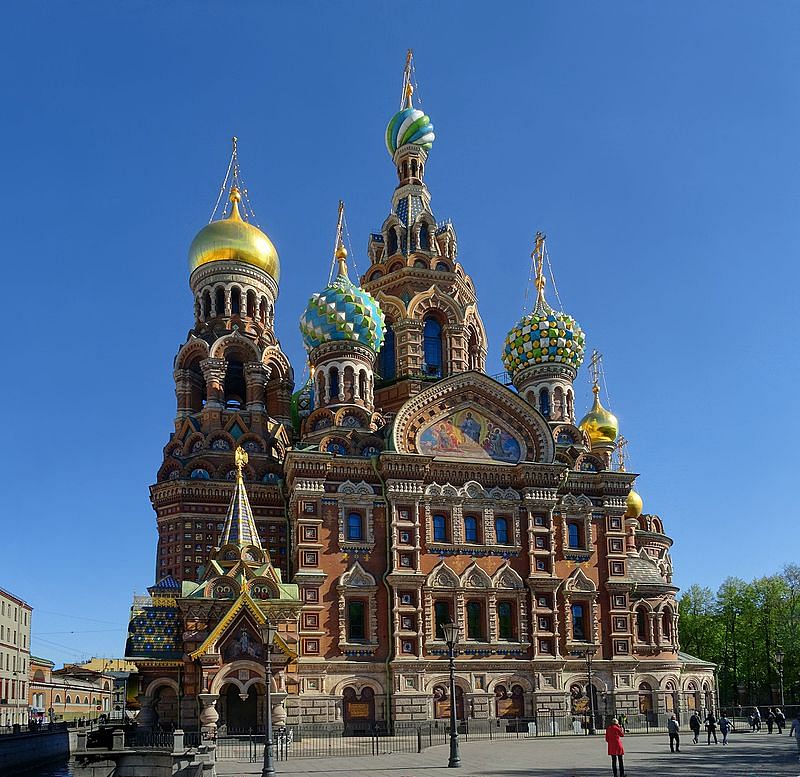
After a long time, I opened the pages of Tolstoy’s War and Peace again. Not particularly to ponder on the fractious time we are living in now but because I had just visited St. Petersburg. After all, the city, Russia’s old capital, is the setting of the author’s voluminous book waiting for Napoleon to invade any day.
St. Petersburg is also more European or French in its architecture and atmosphere than Moscow. In 1703, Tsar Peter the Great set up his capital at the mouth of the Neva river with its many islets. No wonder then, there are 800 bridges connecting the different parts of the city. Almost 8,000 landmarks are scattered around the historic city.
But, arriving by train in the afternoon from Moscow, we hardly had any scope to admire the landmarks. Our hotel was at Vasilyevsky, largest of the islands, at a little distance away. We were breathless and worried because we had pre-booked for a ballet show in the evening at the theatre inside the Hermitage Museum. In the high summer with thousands of tourists pouring in, and no seat number allotted, we were worried if we would get a vantage view in the rather small hall. But luck was in our favour.
What’s in a name?
Going up the grand stairs we arrived at the semicircular auditorium surrounded by coloured marble pillars and walls with 10 niches for statues of ‘Apollo And The Muses’. Watching the Swan Lake in the premises where Catherine the Great, Empress of Russia, entertained her selected guests, added to the aura.
From the beginning, St. Petersburg has worn the garb of an intellectual and cultural hub with elan. It has been called by different names at different times, depending on the regime, Petrograd, Leningrad, Stalingrad, and now back to its original name. Ballet composer Tchaikovsky, world literary figures like Dostoyevsky and Vladimir Nabokov walked its streets.
The next day, we were headed to Pushkin, about an hour’s drive to the suburb called Tsarskoye Selo (Tsar’s village) that has his statue and a park named after him, and the Grand Catherine Palace. It was drizzling in the morning as we arrived but even the grey sky could not mar the magnificent façade of the rococo Summer Palace named after Catherine I, wife of Peter the Great, who commissioned it in 1717 for her. The rather modest two-storey building was transformed into this huge palace, nearly 1 km in circumference and surrounded by landscaped parks, by their daughter, Empress Elizabeth.
Room after room, hall after hall, richly decorated and with priceless artefacts, announce the wealth of the Romanov family in the 18th century whose fiefdom had stretched over a vast tract of land. Its ‘Amber Room’, lined with the precious stone wall to wall, is world-famous. Even trying to estimate its value is mind-boggling. Art historians say that it was a gift to Peter the Great by the German king celebrating peace between Russia and Prussia, whose common enemy was Sweden. The pieces came packed in 18 large boxes and were first installed in the Winter Palace in the city but transported here at Elizabeth’s order.
But alas, the Nazis looted it during World War II, all packed in crates, as it had come from Germany once, and then it disappeared. What we see today is a replica completed in 2003. Dubbed ‘The Eighth Wonder of the World’, the original amber panels are lying somewhere, hidden or plundered.
Talking of palaces, Catherine the Great’s Winter Palace (that hosts the Hermitage Museum), the second largest in the world, is the star among must-visits in St. Petersburg. Ironically, the name comes from Ermitage, meaning abode of a hermit. But there is nothing resembling a hermit’s life in the long stucco palace interiors. Brightly painted in azure and white, it is not only the symbol of Russian empire’s heyday, it is also a connoisseur’s dream palace with around three million artefacts lodged in 400 rooms that are spread over three floors. To take in so much within an hour or so is impossible — paintings by Italian masters, gilded peacocks, throne room — the list goes on.
Churches galore
Like Moscow, St. Petersburg also has some great Russian Orthodox churches with elaborate embellishments. The Church of the Savior on Spilled Blood, the name refers to the murder of Tsar Alexander II on its floor in 1881, has great mosaics but I was smitten by it at night; it was glowing with clever lighting.
St. Isaac’s Cathedral was originally the city’s main church that was built between 1818 and 1858. Massive red granite columns on the facade lead you into the huge main hall, which could accommodate 14,000 standing worshippers. It stuns you with its amazingly detailed mosaic icons, paintings and columns made of malachite and lapis lazuli. The church was closed in the early 1930s and reopened as a museum. A river cruise on the Neva gave us a bird’s eye view of the impressive buildings on the banks, in many colours and styles; some of them must have gone back to the 19th century.
On our last night in St. Petersburg, two things had to be done. Watching the Troitsky Bridge’s opening at midnight. The Neva River connects Lake Ladoga to the Baltic Sea, and during the summer navigation season, the bascule bridge has to open to let in the cargo ships. At the stroke of midnight, the huge bridge opened as if by magic, and lovely music floated in the air. Later, we went for an ‘urban night safari’ to enjoy St. Petersburg’s famous illuminated streets. The city was like a fairyland with brightly illuminated buildings and streets. It was a fitting goodbye to the beautiful city.